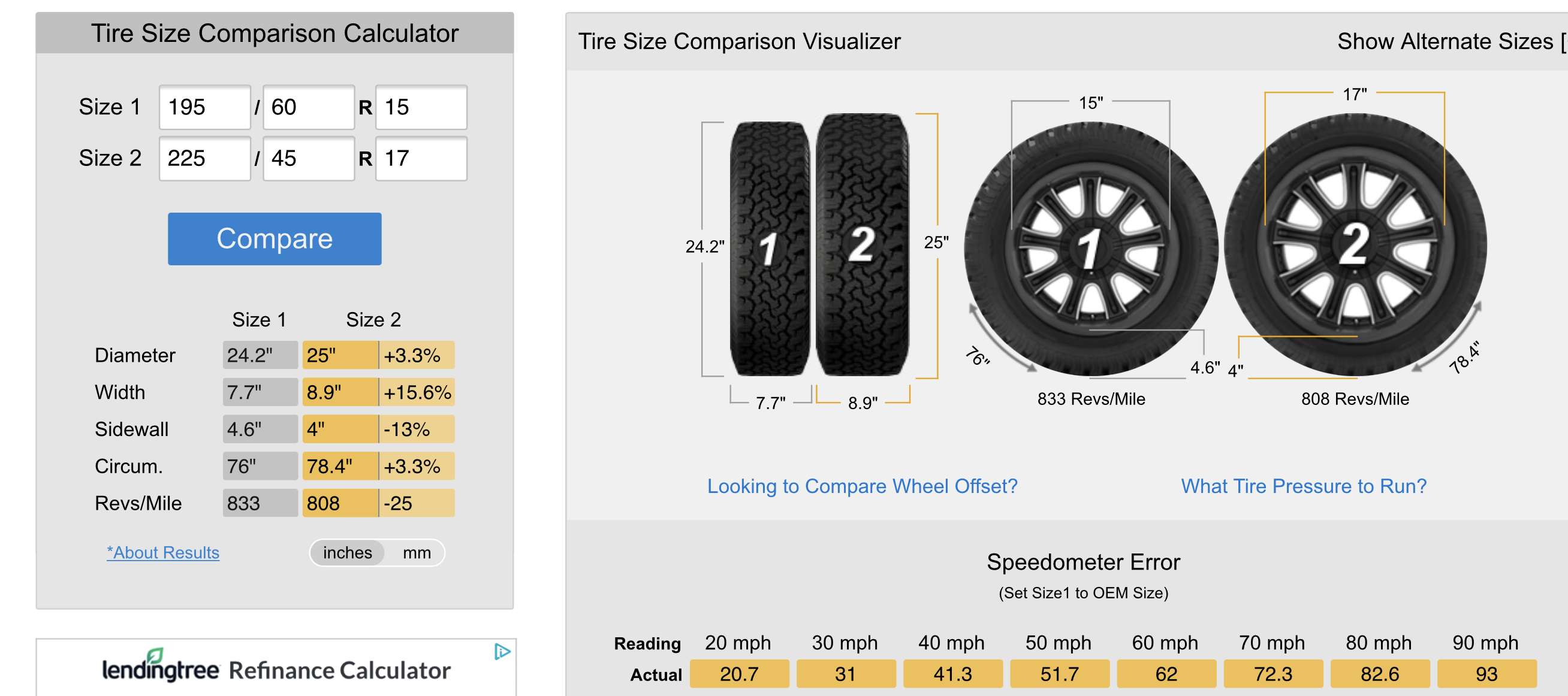What kind of truck and what do you do with it? I like to downsize the wheel diameter (18" to 17" or 17" to 16") and bump the tire size up to get more sidewall. Better ride and in the case of 18" vs 17", the tire selection/price is better on the 17".
You can plus size the overall diameter, but only to some degree without lifting. You have to watch the clearances, especially the front when turning the wheels. .8" increase is pretty decent. I went up about the same on one of my SUVs (went 18" to 17" and bigger tire for more 'meat') and had to break out a heatgun and pipe to reform the front splash guards in the wheel wells. Just looking from the side, the front tires look like they have plenty of clearance, but once you turn the wheel, you realize how close edges of the tires get to the splash guards.
One other thing, different brand/model tires can vary in actual width and diameter. Certain tires run large and others small. I have to deflate my spare tire half-way to get it under my SUV because the brand/model is about a .25" larger than the average, otherwise it can't clear the towing hitch bracket. Just for for thought.
What I learned the most, was going to an actual forum for the truck you're trying to upgrade. There will be a list of "Yeah, it works, no it doesn't work" on there. That's how I knew I could downsize my wheels and they'd still clear the calipers, and that I would need to used a heatgun on the splashguards, etc.





